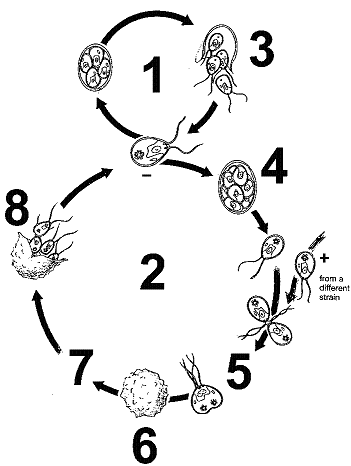The ends of chromosomes in human cells are "capped" with special repetitive DNA sequences called
A. suppressor genes.
B. oncogenes.
C. telomeres.
D. centromeres.
E. radiata.
Answer: C
You might also like to view...
It is generally accepted that independent mutation rather than gene duplication is the mechanism for evolution of most new genes
Indicate whether the statement is true or false.
Refer to Figure 26-3. At point 4, several Chlamydomonas cells are “packaged” in a surrounding membrane. Which of the following statements concerning those cells is FALSE?

a. They are gametes.
b. They were produced by mitosis.
c. They are part of the negative (?) strain.
d. They are part of the haploid generation.
e. They can also be considered zoospores
In horses and rabbits, the digestion of cellulose takes place in the _______________
A. stomach B. anus C. tumen D. cecum E. large intestine
Embryonic induction, the influence of one group of cells on another group of cells, plays a critical role in embryonic development
In 1924, Hans Spemann and Hilde Mangold transplanted a piece of tissue that influences the formation of the notochord and neural tube, from the dorsal lip of an amphibian embryo to the ventral side of another amphibian embryo. If embryonic induction occurred, which of the following observations justifies the claim of embryonic induction? A) The transplanted tissue induced multiple limbs to develop on the ventral side of the recipient embryo. B) The transplanted tissue inhibited normal cell division on the dorsal side of the recipient embryo that lead to its death. C) The transplanted tissue had no effect on either the ventral or dorsal side of the recipient embryo so it continued to develop normally. D) The transplanted tissue induced the formation of a second notochord and neural tube on the ventral side of the developing embryo.